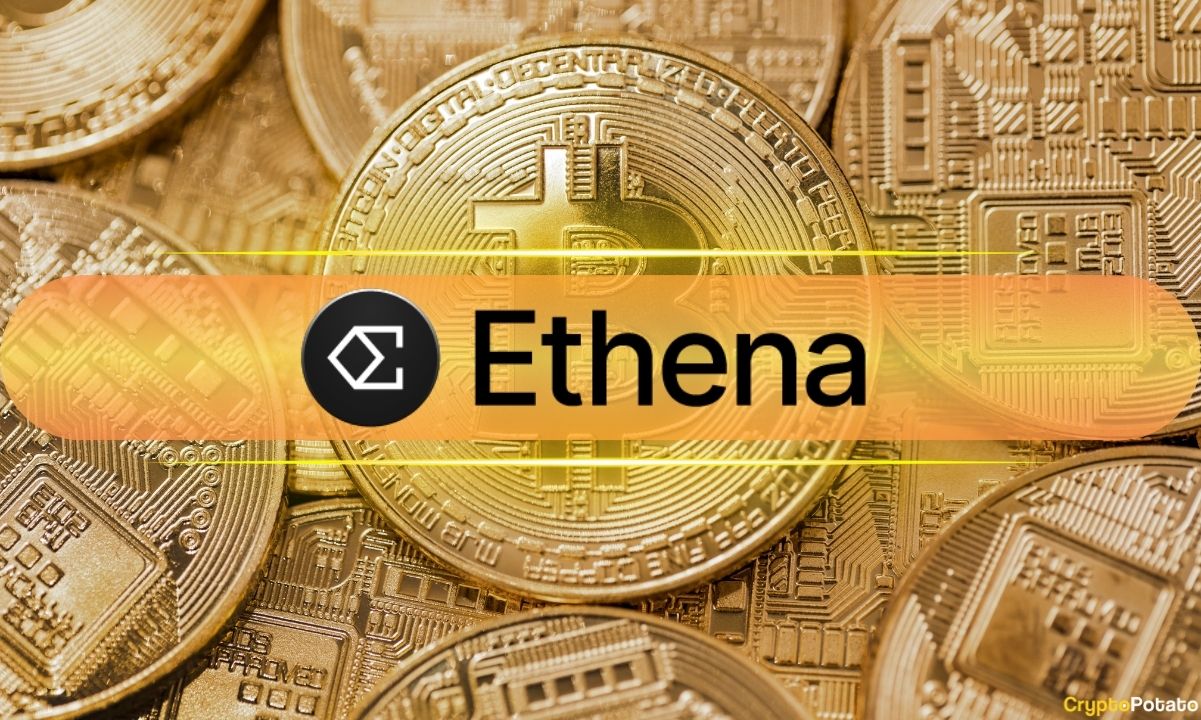

Ethena is a synthetic dollar protocol on Ethereum that issues the stablecoin USDe. The asset aims to be a censorship-resistant and scalable form of digital money pegged to the US dollar.
On April 16, on-chain analytics firm CryptoQuant took a deep dive into the Ethena ecosystem revealing risks with the latest stablecoin, which has seen its market capitalization grow to more than $2 billion in a shorter time after launch than any other major counterpart.
USDe’s market cap peaked this week at just under $2.4 billion, following a surge of 900% following its launch in February, making it the fifth-largest stablecoin.
Ethena Risks Revealed
USDe is backed by crypto assets like ETH and BTC and maintains its peg by delta hedging using short positions on centralized exchanges.
To mint USDe, users deposit BTC, ETH, staked Ether (stETH), or USDT into the protocol, which then opens equivalent short perpetual positions with no expiration date.
However, the stablecoin faces risks in maintaining USDe’s peg, especially from “funding risks” having to pay negative funding rates when traders want to open more short than long positions.
Funding rates are used to maintain the balance between the price of perpetual futures and the price of the underlying asset.
CryptoQuant prepared an analysis on Ethena’s USDe.
– USDe is a recently launched stablecoin that has grown to a market capitalization of over $2 billion in a shorter time after launch than any other major stablecoin.
– We have had some investors requesting this analysis to… https://t.co/b0yfI6hgSL
— Julio Moreno (@jjcmoreno) April 16, 2024
CryptoQuant’s analysis shows that Ethena’s current $32.7 million reserve fund is enough to cover extremely negative funding rates if USDe’s market cap stays below $4 billion (it is currently $2.35 billion).
However, funding payments become larger as USDe market capitalization increases, as short positions also become bigger, noted CryptoQuant head of research Julio Moreno.
If the stablecoin market cap grows to $5 or $10 billion, the reserve fund would need to increase to $40 to $100 million to handle periods of extremely negative funding rates safely.
After crunching the numbers, Moreno concluded:
“Investors should monitor if Ethena’s reserve fund is appropriate for the market capitalization of USDe in order to handle periods of extremely large negative funding rates.”
Algorithmic Stablecoin Concerns
The analysis also noted that Ethena’s “keep rate,” which is the portion of yield sent to reserves, is crucial to growing the reserves appropriately based on USDe’s market cap to withstand bear market conditions.
Market participants have a right to be wary about algorithmic stablecoins, as most of them remember the astronomical rise and cataclysmic collapse of the Terra/Luna ecosystem in 2022.
Moreover, USDe’s attraction is yields as high as 17%, which has drawn comparisons with Terraform Lab’s UST, the much-hyped stablecoin that went up in flames causing the crypto contagions almost two years ago.
LIMITED OFFER 2024 for CryptoPotato readers at Bybit: Use this link to register and open a $500 BTC-USDT position on Bybit Exchange for free!
The post appeared first on CryptoPotato






